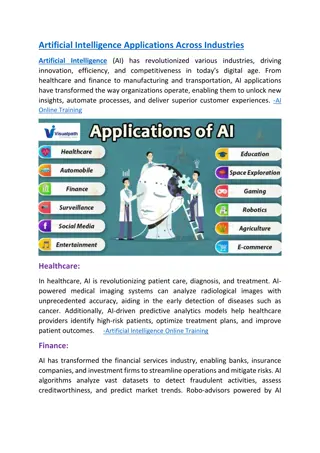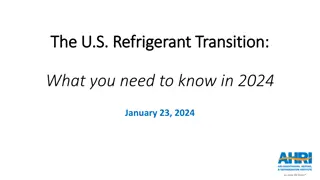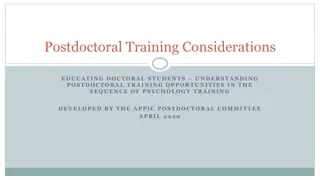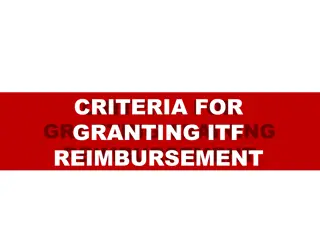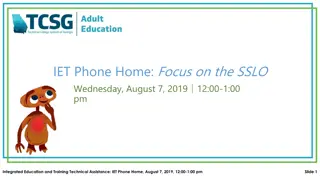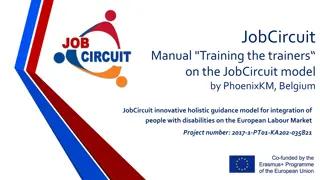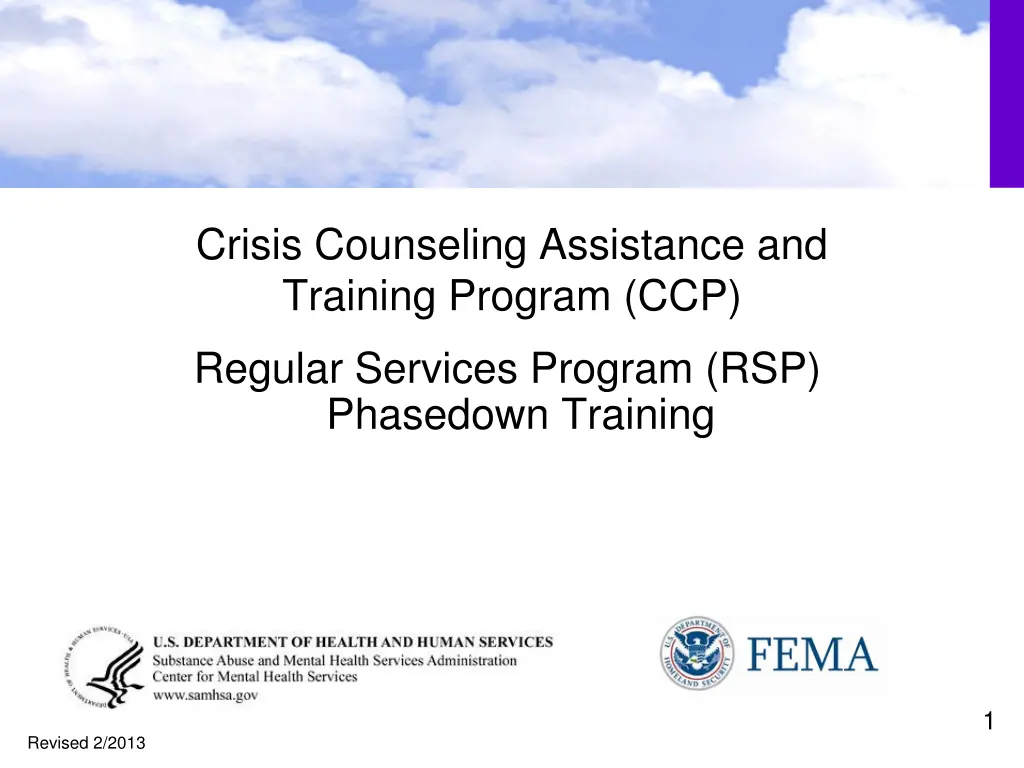
Crisis Counseling Assistance and Training Program (CCP) Overview
Explore the Crisis Counseling Assistance and Training Program (CCP) which provides support for survivors and communities in disaster scenarios. Learn about phasedown strategies, survivor needs assessment, staff support, public education, and legacy planning. Get ready to assist in the phasedown process and contribute to the CCP's Final Report.
Download Presentation

Please find below an Image/Link to download the presentation.
The content on the website is provided AS IS for your information and personal use only. It may not be sold, licensed, or shared on other websites without obtaining consent from the author. If you encounter any issues during the download, it is possible that the publisher has removed the file from their server.
You are allowed to download the files provided on this website for personal or commercial use, subject to the condition that they are used lawfully. All files are the property of their respective owners.
The content on the website is provided AS IS for your information and personal use only. It may not be sold, licensed, or shared on other websites without obtaining consent from the author.
E N D
Presentation Transcript
Crisis Counseling Assistance and Training Program (CCP) Regular Services Program (RSP) Phasedown Training 1 Revised 2/2013
Introductions Please introduce yourself by sharing the following: Your name Your role or position in the CCP One thing you have appreciated about being a part of this CCP 2
Objectives After this training, participants will be able to do the following: Identify the issues associated with phasedown. Identify remaining survivor and community needs. Implement strategies to address remaining needs. Identify strategies to address staff needs related to phasedown. Adapt public education and media messaging for phasedown. Describe the CCP s legacy for survivors, the community, and the staff. Help develop a written phasedown plan. Assist with the preparation of the CCP Final Report. 3
Agenda Morning Welcome and Introductions Afternoon Section 4: Revising Public Education and Media Plans Objectives and Agenda Section 5: Leaving a Legacy Section 1: Phasedown Components Break Section 6: Program Final Report Section 2: Assessing and Addressing Remaining Survivor Needs Section 7: Phasedown Plan Applying Your Learning and Course Evaluation Break Section 3: Assessing and Addressing Staff Needs 4
Guidelines for Working Together Keep time (start on time, return from breaks on time, end on time). Switch mobile phones off or to vibrate. Participate fully. Ask questions freely. Balance talking and listening. Respect each other s points of view. 5
Section 1Phasedown Components Phase of Disaster Key Concepts 6
Session Objective Identify the issues associated with phasedown. 7
Phase of Disaster What phase of the disaster are you in? Source: Zunin/Meyers, as cited in U.S. Department of Health and Human Services. (2000). Training manual for mental health and human service workers in major disasters (DHHS Publication 90 538). Washington, DC: U.S. Department of Health and Human Services, Substance Abuse and Mental Health Services Administration , Center for Mental Health Services. 8
Key Concepts The CCP should: Support, but not replace, community infrastructure. Transition services to local organizations. Facilitate community ownership of meeting the needs of survivors. 9
Key Concepts (cont.) Revise public education and media plans to reflect phasedown efforts. Use public education and media messaging to deliver a message of hope, recovery, and resilience for individuals and the community. Prepare individuals, community, and staff for program phasedown. 10
Section 2Assessing and Addressing Remaining Survivor Needs Assessing and Addressing Individual Needs Assessing and Addressing Community Needs Identifying Community Service Capacity 11
Session Objectives Identify remaining survivor and community needs. Implement strategies to address remaining needs. 12
Assessing and Addressing Individual Needs How many individuals are we still serving? How many of these individuals need referrals to existing services? How will we identify existing services and make referrals? How will we transition them to existing services? How will we determine when an individual will not need referral? How will we handle newly identified survivors who may request services? 13
Assessing and Addressing Individual Needs (cont.) Crisis counselors should: Help survivors reflect on the progress they have made. Assist survivors in reflecting on the coping skills that have been most useful. Encourage survivors to continue to set and prioritize goals. Use public education and media messaging to promote a message of hope, recovery, and resilience. 14
Assessing and Addressing Individual Needs (cont.) Ensure that survivors are aware of existing services and knowledgeable about referral mechanisms. Continue to utilize public messaging and distribution of educational materials to communicate how to access resources. Engage survivors in assessing their need for substance abuse and mental health services. 15
Assessing and Addressing Community Needs Discuss experiences, and analyze data collected in order to: Determine populations and areas with remaining needs. Identify special populations with remaining needs. Identify those who are in need but have not accepted services. 16
Assessing and Addressing Community Needs (cont.) Inform the community about the project phasedown. Inform community service providers of the transitioning of services. Enhance community-resilience activities and distribution of educational materials. 17
Assessing and Addressing Community Needs (cont.) Meet with community organizations to provide opportunities for partnerships and lasting relationships. Participate in community events that support recovery and resilience. Plan a public messaging campaign that: Announces the project phasedown, while emphasizing the completion of the goals by the time-limited CCP Acknowledges progress toward recovery Provides information about available community resources 18
Identifying Community Service Capacity Reengage behavioral health providers to identify available services and educate them about survivor behavioral health needs. Reengage local disaster-related organizations, including faith-based groups, to identify available services and inform them of remaining survivor needs. Ensure there is a mechanism available to the public to access needed services, such as a local hotline. Inform individuals and community groups about available resources once the CCP has ended through public education and media messaging. 19
Working Group Task Slide Choose the topic you are most interested in: individual needs, community needs, community service capacity. Each working group will have three or four questions to discuss see the questions listed in your workbook. You ll have 30 minutes for your discussion. Choose a facilitator to guide the discussion, a recorder to capture key points, and a reporter to present highlights and actions items. 20
Section 3Assessing and Addressing Staff Needs Assessing Staff Needs Addressing Staff Needs 21
Session Objective Identify strategies to address staff needs related to phasedown. 22
Assessing Staff Needs Consider the following: Separation from valued work Ending of relationships with disaster survivors and coworkers Decreased morale as the program comes to an end Job loss and new job search Returning to non-disaster work Stress related to disaster work and phasedown 23
Assessing Staff Needs (cont.) What personal concerns do you have about the ending of the project? What are your needs as the project comes to a close? Make notes on the worksheet in your workbook. 24
Table Task Consider the list of concerns and needs generated. What recommendations do you have for program management? Brainstorm a list of recommendations. Choose two or three to report back. 25
Addressing Staff Needs Ensure that staff are aware of the project end date. Provide organized opportunities for staff to share experiences and accomplishments. Connect staff with employment resources (e.g., r sum writing or job search workshops). Provide references for new jobs. Arrange for events or ceremonies to recognize program and staff achievements. Encourage staff to continue stress management and self-care. 26
Section 4Revising Public Education and Media Plans Assessing and Revising Public Education Strategies Assessing and Revising the Media Plan Developing Talking Points 27
Session Objective Adapt public education and media messaging for phasedown. 28
Assessing and Revising Public Education Strategies What community leaders and groups need to be educated about phasedown? What strategies should be used to reach them? What are the messages we want to convey? How will we convey these messages through public education? 29
Assessing and Revising the Media Plan What is the current media plan? What messages have been conveyed? What messages need to be conveyed during phasedown? Who should be involved in developing and implementing the revised plan? 30
Developing Talking Points Talking points should convey: Information about availability of CCP services Information about phasedown and transitioning of services with announcement of end date Education about the status of community recovery with an emphasis on resilience and hope Highlights of program successes through survivor stories Cultural sensitivity 31
Working Group Sessions Choose which topic you want to discuss: public education, media plan, or talking points. The questions to be addressed by each working group are listed in your workbook. You have 30 minutes for your discussion. Identify a facilitator to guide the discussion, a recorder to capture the key points on a tear sheet, and a reporter to present the highlights. 32
Section 5Leaving a Legacy What Is a Legacy? Legacy for Survivors Legacy for the Community Personal Legacy Legacy for Staff Strategies for Leaving a Legacy 33
Session Objective Describe the CCP s legacy for survivors, the community, and the staff. 34
What Is a Legacy? What does legacy mean? Whom is the legacy meant to affect? What are some tangible expressions of the legacy? 35
Legacy for Survivors and the Community For the group assigned to your table either survivors or the community discuss: What is the legacy of this program for them? 36
Legacy for Survivors Understanding of the behavioral health effects of disaster Improved coping skills Knowledge of community resources Skills to access existing supports The establishment of personal rituals 37
Legacy for the Community A cadre of staff trained in disaster behavioral health response A more collaborative provider network A community that is better educated about disasters and their behavioral health effects Enhanced resilience Established rituals and commemorations Community organizations better informed about survivors practical needs 38
Personal Legacy Individually, reflect on: What have I done to leave a legacy? What would I like to do before the CCP is done? Find a partner and share your responses with him or her. 39
Legacy for Staff Improved skills Sense of satisfaction and self-worth Improved coping and stress management skills Community connections Job opportunities 40
Strategies for Leaving a Legacy Create public health messages about recovery, social support, and hope. Leave educational materials and self-help resources with community partners. Include analysis of data and program best practices in the CCP Final Report. Provide training and consultation to health providers, educators, and community leaders. 41
Strategies for Leaving a Legacy (cont.) Maintain a database of trained crisis counselors and partner agencies for use in future disasters. Encourage low-cost or no-cost community projects and collaborations that can continue in an in-kind capacity. Determine if the hotline or helpline can continue to handle information and referrals. 42
Section 6Final Program Report Why Is This Report Important? Strategies for Contributing to the Report 43
Session Objective Assist with preparation of the CCP Final Report. 44
Why Is This Report Important? A comprehensive CCP Final Report: Tells the story of the disaster and the CCP Identifies program highlights, accomplishments, and best practices Documents programmatic and fiscal accountability Provides recommendations to state and federal staff Is an essential part of the legacy of the CCP Becomes a public document 45
Strategies for Contributing to the Report The Final Report should tell the story of the CCP. Include information about the state and all service providers. Involve local provider staff in compiling the data and creating the story. The Final Report should reflect the activities and accomplishments of the entire program. Include information on program phasedown and legacy. 46
Strategies for Contributing to the Report (cont.) Be familiar with the Final Report format. Incorporate the vision of the program by: Identifying its greatest accomplishments Describing challenges and how they were overcome Reflecting on how the community has benefited from the program 47
Strategies for Contributing to the Report (cont.) Discuss and document: Program vision and accomplishments Survivor success stories Community success stories Challenges and how they were addressed Program best practices Personal achievements of staff 48
Planning to Contribute to the Final Report For your group s topic area, brainstorm one of the following: Key points for that section of the Final Report Actions to take to gather the information needed for that section of the report Other instructions: Take 10 minutes for your discussion. Be prepared to report out to the rest of the group. Record your ideas on a tear sheet. 49
Section 7Phasedown Plan Role of Managers Role of Crisis Counselors Developing a Phasedown Plan Communicating and Implementing the Phasedown Plan 50



